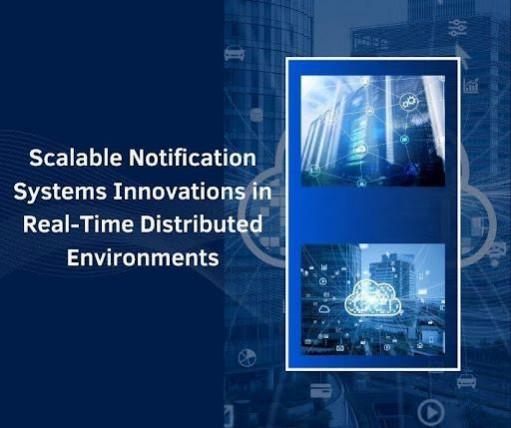
In an era of digital acceleration, real-time notification systems have become indispensable across various industries. These systems are responsible for delivering time-sensitive information, from social media alerts to critical business updates. Ankita Kamat, a researcher in scalable architectures, explores the technological advancements shaping modern notification frameworks. Her work delves into the transformation of monolithic systems into agile, distributed architectures that enhance performance, reliability, and scalability.
The Rise of Microservices in Notification Systems
The shift from monolithic to microservices-based architectures has revolutionized notification systems. By decomposing functionalities into independent services, organizations achieve greater flexibility and efficiency. Research highlights that microservices enable more frequent deployments and improved fault isolation. Each component such as message queuing, user preference management, and delivery mechanisms operates independently, ensuring that failures in one module do not compromise the entire system.
Event-Driven Architecture: The Heart of Real-Time Processing
Event-driven architectures (EDA) form the backbone of scalable notification systems, allowing asynchronous communication between services. Studies demonstrate that EDA can handle massive message volumes with sub-millisecond latencies. By implementing event sourcing and Command Query Responsibility Segregation (CQRS), organizations maintain complete audit trails and optimize data retrieval. These architectures enhance system responsiveness, particularly in handling traffic spikes without compromising message delivery.
Optimizing Message Delivery with Advanced Brokers
Message broker technologies play a pivotal role in real-time notification systems. Platforms like Apache Kafka and RabbitMQ provide robust messaging capabilities, each suited for specific use cases. Kafka excels in high-throughput scenarios, processing millions of messages per second through its partitioned log architecture. RabbitMQ, on the other hand, is optimized for low-latency message delivery with complex routing patterns. By leveraging both technologies, organizations strike a balance between performance and flexibility in notification workflows.
Ensuring Resilience Through Smart Architectures
Resilient notification systems rely on smart architectures like the Bulkhead Pattern, isolating critical components to prevent cascading failures. Circuit breakers and intelligent timeouts further enhance fault tolerance, ensuring continuous message delivery.
Enhancing Scalability with Data Sharding and Replication
Scalability in modern notification systems relies on data sharding for load balancing and reduced latency, while replication strategies, like quorum-based replication, ensure durability and failover support in distributed databases.
Performance Optimization: Load Balancing and Rate Limiting
High-performing notification systems implement advanced load balancing techniques to distribute traffic efficiently. Content-aware routing algorithms dynamically adjust workloads across data centers, preventing service bottlenecks. Rate limiting further ensures system stability by controlling request surges. Research shows that adaptive rate limiting reduces overload incidents by 85%, maintaining service quality even under peak traffic conditions.
Cloud-Native Architectures: Adapting to Dynamic Workloads
Cloud integration enables scalable notification systems that adapt to dynamic workloads. Auto-scaling in containerized environments, Kubernetes' sidecar pattern, and hybrid cloud architectures optimize resource allocation, observability, and performance across distributed users.
Observability: The Key to Maintaining System Health
Effective monitoring is essential for maintaining notification system reliability. Observability practices, such as the RED method (Rate, Errors, Duration), provide real-time insights into system performance. Distributed tracing further aids in pinpointing latency bottlenecks, significantly reducing mean time to resolution (MTTR). Research indicates that well-implemented tracing solutions enhance incident response efficiency by up to 70%.
Future Outlook: Personalization and Intelligent Notifications
AI-driven personalization is the future of notifications, optimizing timing, content, and delivery. Personalized alerts boost engagement 3.7x, while intelligent retry mechanisms improve reliability, ensuring messages reach users at the right moments.
In conclusion, scalable notification architectures play a vital role in enhancing real-time digital interactions. Ankita Kamat's research highlights how microservices, event-driven designs, and cloud-native integrations contribute to building resilient and efficient notification systems. By adopting advanced load balancing, observability, and personalization techniques, organizations can optimize their notification strategies, ensuring seamless and engaging user experiences across global platforms..

















